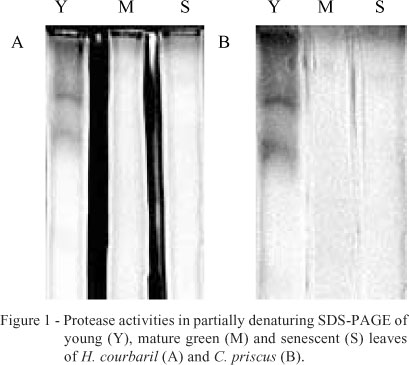In comparison to deciduous species, evergreen plants have lower leaf nutrient contents and higher leaf life span, important mechanisms for nutrient economy, allowing the colonization of low fertility soils. Strategies to conserve nitrogen in two semideciduous tropical forest tree species, with different leaf life spans were analyzed. The hypothesis was the fact that the two species would present different nitrogen conservation mechanisms in relation to chemical (total nitrogen, protein, chlorophyll, and proteolytic activity), functional (leaf life span, N-use efficiency, and N-resorption efficiency), morphological (specific leaf mass) leaf characteristics, and total nitrogen in the soil. Hymenaea courbaril L. presented lower nitrogen compounds in leaves, longer leaf life span, higher N-use efficiency, and higher specific leaf mass, while absorbing proportionally less nitrogen from the soil than Croton priscus Croizat. These characteristics can contribute for a better nitrogen economy strategy of H. courbaril. No relationship was found between leaf life span and N resorption efficiency, nor between leaf life span, protease activity and nitrogen mobilization. The electrophoretic profiles of proteolytic enzymes in young leaves of the two species presented more bands with enzymatic activity than other kinds of leaves.
leaf life span; specific leaf mass; N-resorption efficiency; N-use efficiency; Atlantic forest



